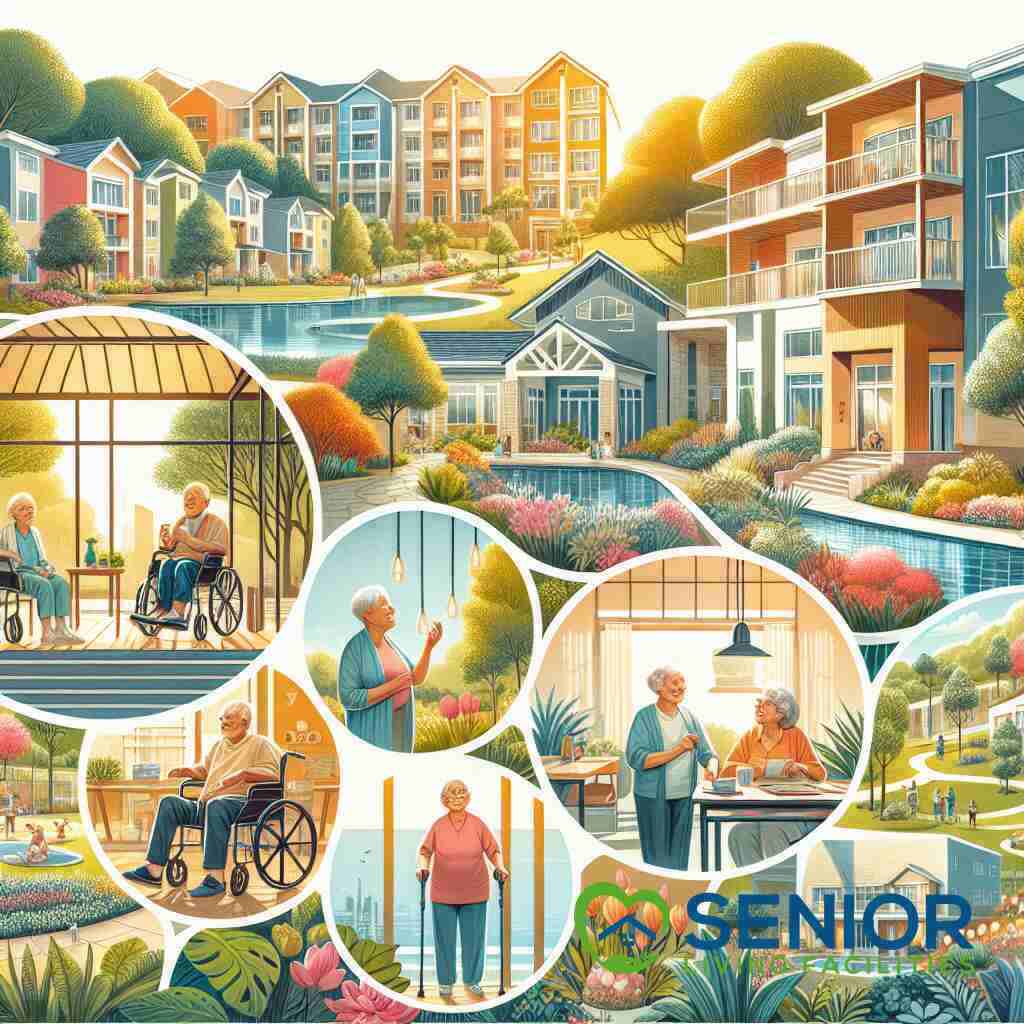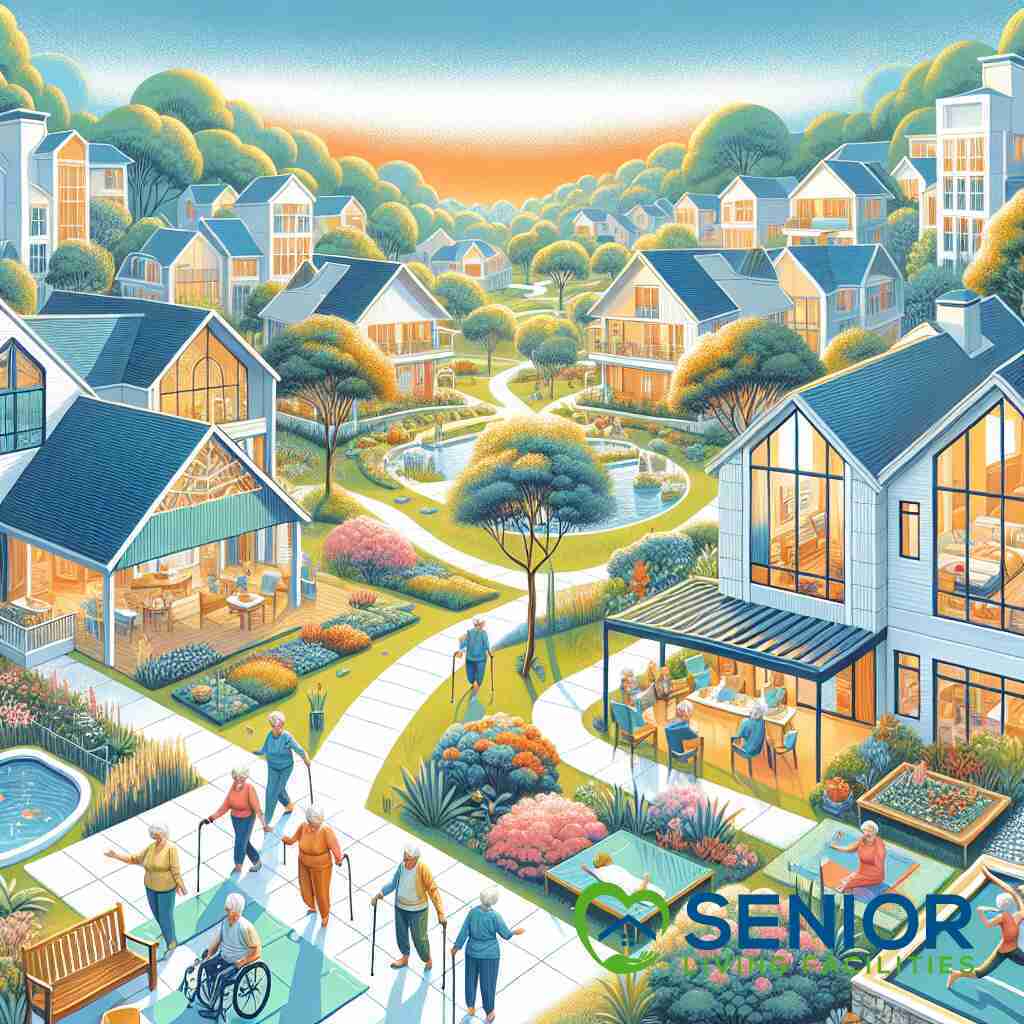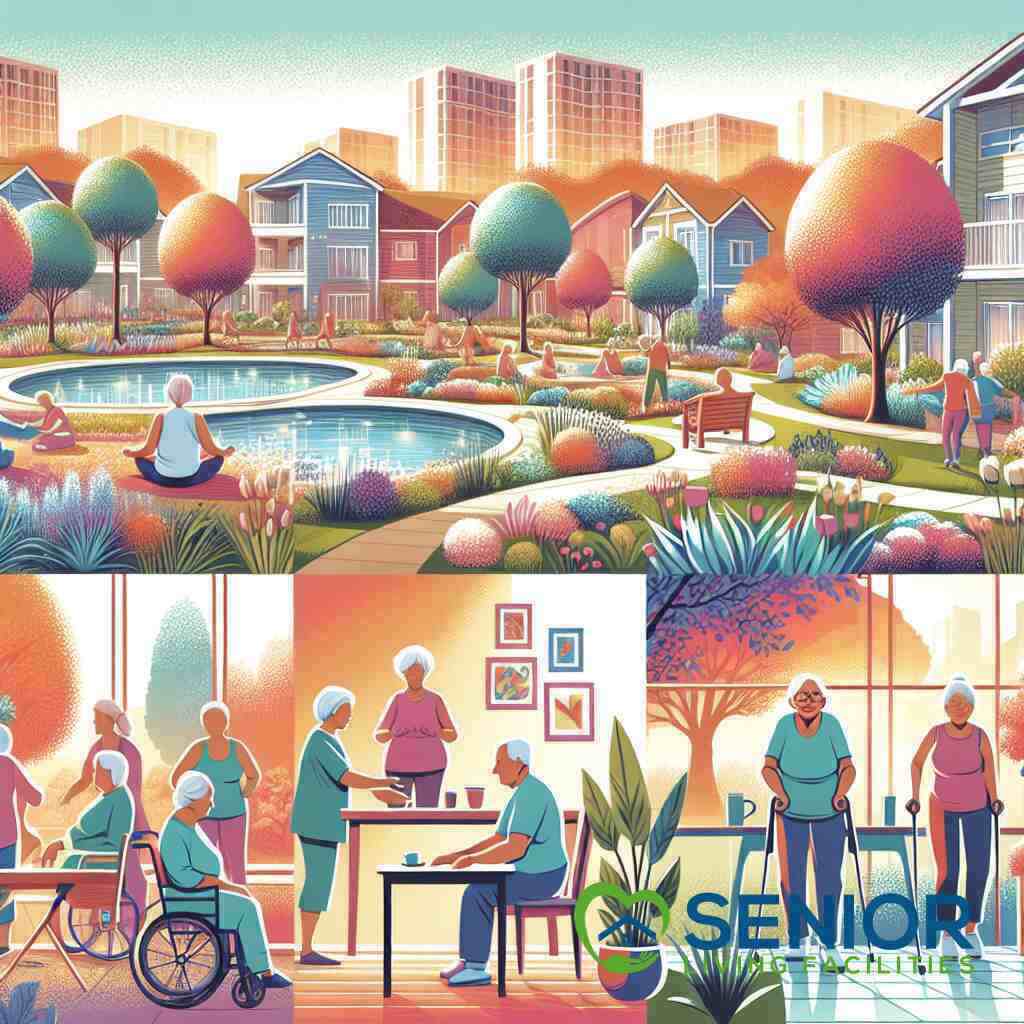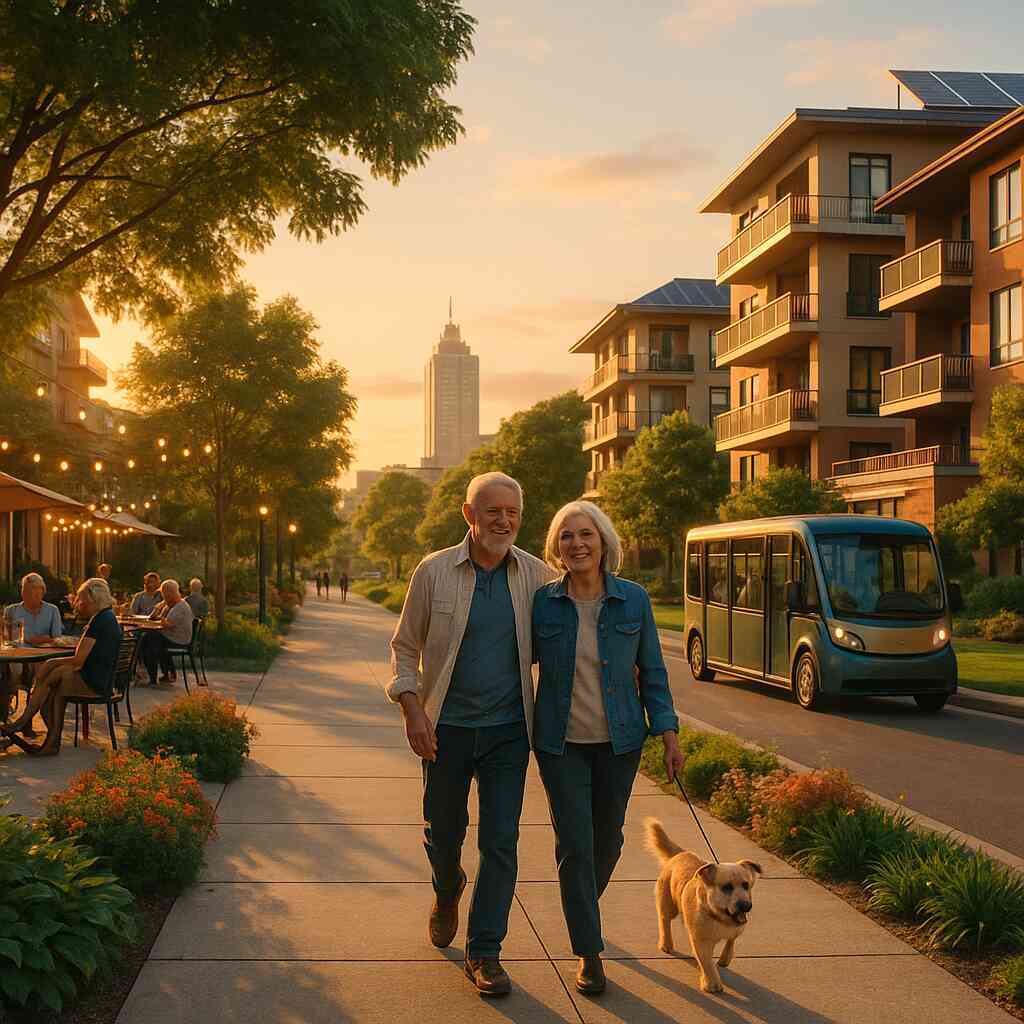
Exploring Senior Housing Options: A Comprehensive Guide
July 29, 2025
Unveiling the Landscape of Senior Living
Understanding the Spectrum of Senior Housing
The spectrum of senior housing is vast and varied, designed to cater to the diverse needs of older adults. At its core, it ranges from independent living solutions to comprehensive long-term care facilities. Seniors can choose communities for those 55+ or specialized elder housing tailored to specific health requirements. Understanding these differences is crucial in making informed decisions that align with individual lifestyles and health needs. With options like senior apartment rentals and senior community residences, this diversity ensures that every senior can find a suitable environment.
Given the importance of finding the perfect accommodation, the decision-making process can be overwhelming, but resources are available to simplify this journey. Explore senior living facilities to gain a better insight into what’s available and match your preferences with the right choice.
The Evolution of Senior Living Models
Senior living models have evolved significantly over time. Initially focused on basic care and necessities, modern senior living emphasizes a holistic lifestyle that includes social engagement, physical wellness, and mental stimulation. The introduction of continuing care retirement communities reflects this shift, offering a seamless transition of care levels as needs change. As senior living communities evolve, they focus more on resident autonomy, personal growth, and maintaining an active lifestyle.
With advancements in health care and technology, today’s seniors have access to cutting-edge medical services and age-appropriate activities. In addition to health care advancements, these models often include amenities akin to luxury resorts, embodying a modern approach to aging that values quality of life and personalization. From artistic classes to wellness programs, these communities provide opportunities for lifelong learning and fulfillment, meeting the dynamic needs of the aging population.
Critical Factors in Senior Living Decisions
Choosing a senior living facility is a significant decision that requires careful consideration of various factors. Location is vital; proximity to family, medical facilities, and essential services can influence the decision. Additionally, the level of care needed must be assessed, whether it’s independent living, assisted care, or specialized nursing homes for complex medical needs.
Financial planning plays a crucial role, as costs can vary widely between independent apartments and comprehensive care facilities. Evaluating the available financial strategies for senior housing before making a move can ease the transition and help with budgeting. Also essential in the decision-making process is the evaluation of community culture and amenities, ensuring they align with personal interests and social lifestyle preferences, providing a sense of community and belonging.
Decoding Senior Care Options
Exploring Independent Living Solutions
Independent living solutions cater to seniors who wish to maintain autonomy while enjoying a community lifestyle. These environments are ideal for older adults who do not require extensive medical care but seek engagement and socialization. Independent living communities often feature amenities such as community centers, fitness facilities, and social events, promoting active senior living. Choosing an independent living solution allows seniors to enjoy the comforts of home without the responsibilities of home maintenance. To delve deeper into what these solutions entail, you can explore independent living solutions.
Beyond the facilities, independent living is about creating opportunities for connection and personal growth. Residents often engage in activities that stimulate mental and physical health, from yoga classes to art workshops. These communities are strategically located to provide easy access to shopping centers, recreational facilities, and cultural attractions, thus ensuring a vibrant lifestyle. Understanding the variations in independent living solutions enables you to select a community that aligns perfectly with your personal goals and desires for this new chapter of life.
The Art of Assisted Living Plans
Assisted living plans are crafted to provide a balanced blend of independence and support for seniors who need assistance with daily activities. These plans often include help with personal care, medication management, and mobility, allowing residents to live comfortably and safely. By integrating personal service plans with community life, assisted living facilities aim to maintain an individual’s dignity and autonomy while providing necessary care. The art of designing these plans lies in tailoring them to meet each resident’s unique needs and preferences, ultimately enhancing their quality of life.
Assisted living facilities offer a variety of services and amenities that cater to the multifaceted needs of their residents. From dining services with nutritious meals to robust activity schedules, these communities focus on holistic well-being. This approach fosters a nurturing environment where seniors can thrive both socially and physically. For families and individuals considering the transition to assisted living, understanding the nuances of these plans can make the process smoother and more informed. Distinctive features of each facility can provide the personalization needed to ensure a comfortable and supportive living situation.
Navigating Long-term Care Facilities
Long-term care facilities serve individuals who require extensive medical and personal care over an extended period. These facilities are equipped with trained staff capable of handling complex health needs, providing a level of care that is not feasible at home or in less intensive settings. Understanding the components of long-term care options, such as nursing care, rehabilitation services, and specialized medical support, is vital for making well-informed decisions. When navigating these facilities, considering both the quality of care and the facility’s atmosphere is crucial to ensure it meets the resident’s and family’s expectations. Assistive housing solutions for seniors offer invaluable insights into what to expect from these facilities.
Selecting a long-term care facility involves evaluating various factors, including location, cost, and services offered. It’s also important to consider the facility’s approach to providing personalized care and its staff’s level of expertise. Families are encouraged to visit potential facilities, engage with staff, and observe daily operations to ensure that the environment is conducive to the resident’s needs. This due diligence helps ensure that the chosen long-term care facility will deliver the much-needed care and support over the coming years.
In-home Care: Aging in Place Services
In-home care offers an alternative option for seniors preferring to age in place, providing the necessary support to live independently at home. This type of care entails a range of services from personal care and household tasks to skilled nursing and therapy. Tailoring the care plan to individual needs ensures that seniors receive appropriate assistance without leaving the comfort of their homes. With the rise in demand for these services, technology has become a significant aid, offering innovations that facilitate effective and safe care solutions within the home environment.
Aging in place services emphasize the importance of maintaining existing social ties and familiar surroundings, which can have positive impacts on mental health and quality of life. These services are often coordinated with family members to ensure seamless and comprehensive care. A plan for aging in place by exploring available resources and technological tools can greatly benefit individuals opting for this path. Ultimately, these services provide a viable alternative for those seeking to preserve their independence while ensuring ready access to necessary support and care.

Tailored Living for the Golden Years
Life in Retirement Communities
Retirement communities offer a unique lifestyle where seniors can enjoy a vibrant social environment paired with supportive services tailored to individual needs. These communities come equipped with a myriad of amenities such as golf courses, swimming pools, and hobby clubs, allowing residents to engage in activities they love. Additionally, they often feature comprehensive health care options and professional support, ensuring safety and well-being. The sense of camaraderie and communal engagement found in retirement living in California is unparalleled, providing residents with opportunities to create lasting friendships and memories. An in-depth understanding of retirement community details helps in selecting the ideal location that matches one’s lifestyle preferences and healthcare needs.
Embracing Active Senior Living
Active senior living communities emphasize the importance of maintaining an active and healthy lifestyle in one’s golden years. These communities provide various fitness and wellness programs tailored to the preferences and capabilities of their residents. From yoga classes and aquatic aerobics to nature hikes and tai chi, the options are diverse and engaging. These initiatives not only focus on physical health but also foster mental well-being and social interaction among residents. Active senior living options in Georgia exemplify this vibrant approach, encouraging seniors to lead fulfilling lives.
The Dynamics of Age-restricted Communities
Understanding the dynamics of accommodation in age-restricted community living is essential for those considering this residential option. Age-restricted communities, typically for those aged 55 and over, offer a unique blend of tranquility and activity, designed with the specific needs and interests of seniors in mind. These communities cater to mature adults who value a quieter environment yet still seek access to various recreational and social opportunities. The rules and guidelines governing these communities ensure a serene atmosphere while facilitating active aging through events and programs specially curated for seniors.
Residential Care and Specialized Elderly Care
In residential care facilities, seniors receive personalized attention and assistance tailored to their varying needs. These facilities are equipped to manage routine tasks and healthcare needs, enabling residents to maintain independence while ensuring safety and support. Specialized elderly care, on the other hand, focuses on addressing specific health conditions such as Alzheimer’s and dementia, providing therapeutic services to improve quality of life. The selection of facilities offering specialized care requires careful consideration of staff expertise, available therapies, and personalized care plans. Families seeking these services are encouraged to explore their options thoroughly, including an overview of residential communities that offer such specialized care environments.
Holistic Approaches to Elder Housing
Understanding Continuing Care Retirement Communities
Continuing care retirement communities (CCRCs) represent a comprehensive elder accommodation choice designed to cater to the evolving needs of seniors. These communities offer a continuum of care, ranging from independent living to assisted care and, ultimately, long-term nursing facilities as required. A critical aspect of CCRCs is allowing seniors to remain in a familiar environment even as their care needs intensify, thus promoting stability and comfort. When evaluating CCRCs, it’s essential to consider factors such as transition procedures, care quality, and financial arrangements. For a deeper understanding of these considerations, explore continuing care retirement community considerations.
Residing in a CCRC also facilitates expansive social connections and a dynamic lifestyle. Activity programming often includes diverse group activities, wellness and educational programs, and community events that promote active aging. These enriching experiences contribute to the mental and emotional well-being of residents, ensuring their golden years are vibrant and fulfilling. When assessing CCRCs, it is beneficial to engage with residents and staff, ensuring the community culture aligns with individual values and lifestyle expectations.
Innovative Geriatric Housing Plans
Geriatric housing plans have revolutionized the landscape of senior living, emphasizing innovation and personalized care strategies. These modern housing solutions integrate technology to enhance the living experience, utilizing smart home systems and healthcare monitoring tools to maintain safety and independence. Such advancements provide seniors with greater control over their environment and healthcare, aligning with the trend toward self-directed living. This innovation supports seniors in managing daily tasks, emergencies, and health conditions with greater ease and confidence.
Incorporating cutting-edge health management technologies in these plans is just one facet of innovation. Design elements such as accessibility-focused architecture, eco-friendly materials, and ergonomic furniture also play a crucial role. These details contribute to an environment that is not only functional but also comfortable and sustainable. By prioritizing design and technology, innovative geriatric housing plans create homes that adapt to the unique needs of aging adults, ensuring they can thrive in place.
Adaptive Housing for Seniors: Beyond the Basics
Adaptive housing for seniors extends beyond conventional elder housing strategies by focusing on solutions tailored to individual functional capabilities and preferences. These housing options prioritize modifications that support aging in place while enhancing the quality of life. Adaptations may include stairlifts, walk-in tubs, adjustable countertops, and advanced lighting systems that cater to the sensory and mobility challenges often faced by aging adults.
Going beyond basic home modifications, adaptive housing also encompasses communal living environments designed with senior-specific amenities. These communities foster inclusivity and participation, ensuring facilities such as communal gardens, hobby rooms, and adaptable communal spaces are readily accessible. Understanding the importance of adaptability in senior housing helps guide the selection of spaces that allow for continued independence while meeting evolving needs.
Pioneering Retirement Housing Solutions for Aging Adults
The modern landscape of retirement housing solutions is pioneering, with a focus on catering to diverse and changing elder needs. This approach includes innovative living arrangements like co-housing, multi-generational communities, and minimalist living designs that offer flexibility and shared resources. Such solutions disrupt traditional models by emphasizing community integration and intergenerational support.
Pioneering housing solutions are not limited to alternative living arrangements. Many integrate healthy lifestyle programs and personalized health and wellness plans, encouraging engagement and proactive health management. Further, these solutions often consider environmental sustainability, using energy-efficient practices and materials in construction and maintenance, aligning with green living priorities. These progressive concepts in retirement housing encourage aging adults to pursue enriched, engaged, and purposeful retirement lives.
Strategic Considerations for Relocating as a Senior
Senior Community Residences: Finding the Right Fit
Identifying the perfect senior community residence is paramount when considering relocation as a senior. The journey begins with assessing your personal preferences, lifestyle, and care requirements to ensure they align with potential communities. Each senior living facility offers unique attributes, from independent living solutions to assisted care and specialized nursing services, which accommodate varying degrees of support and engagement. To find the right fit, it is essential to utilize comprehensive resources like strategies for finding senior housing, which provide insights into available amenities, services, and community cultures. Detailed comparisons and personal visits can further aid in identifying which community best fulfills your aspirations for an enriching and supportive living environment.
The significance of exploring diverse senior living opportunities cannot be underscored enough. A thorough examination of community ethos and amenities, such as transportation services, recreational facilities, and social clubs, is beneficial. Understanding the dynamics of senior community residences involves gauging the quality of inter-resident interactions and management responsiveness. It’s advisable to engage with current residents and team members during your visits to understand the day-to-day experiences and community spirit firsthand.
Evaluating Local Amenities in Your Desired Area
When relocating as a senior, evaluating local amenities surrounding your desired area is crucial for maintaining a satisfying quality of life. Access to essential services like healthcare facilities, shopping centers, and public transportation plays a significant role in daily convenience and overall well-being. Ensure your potential residence is strategically located to provide easy access to these vital amenities, thereby facilitating a more autonomous lifestyle.
Proximity to cultural attractions, parks, and leisure venues further enriches the living experience. This aspect of location consideration enables seniors to pursue hobbies, social interaction, and continual learning with ease. Additionally, communities that foster vibrant social scenes and opportunities for engagement are often located near libraries, theaters, and community centers. Evaluating these parameters is critical in selecting a locale that supports your continued active and engaged living.
Exploring Financial Strategies for Senior Housing
Financial planning is an integral part of transitioning to senior housing. Understanding the financial landscape of senior living options is essential to making cost-effective decisions while securing a desirable living arrangement. To navigate this domain, it is prudent to assess various financing models, including rental agreements, purchase options, and continuing care contracts.
Investigating available financial strategies and government assistance programs can prove beneficial. These resources may include long-term care insurance, Medicaid, or veteran benefits, optimally reducing the financial burden associated with senior housing. By harnessing financial planning tools and conducting a comprehensive cost-benefit analysis, prospective residents can ensure they have adequate resources to sustain their lifestyle in their chosen community comfortably.
Preparing for a Seamless Transition
To ensure a seamless transition into senior housing, thorough preparation and planning are imperative. This process begins with organizing current belongings and determining which items will accompany you to your new home. Downsizing can be an emotional yet liberating process, affording the chance to retain cherished possessions while minimizing clutter in your new space.
Establishing open communication with family and staff at your prospective community is paramount. This dialog facilitates clarity on expectations, requirements, and transitional support offered by the facility. Scheduling frequent visits before your official move-in date can also help familiarize you with the environment and ease anxieties about the transition process. As you prepare for this significant life change, consider using resources to compare assisted vs independent living to identify the most suitable living setting. Effective preparation can transform your relocation experience into an exciting new chapter in your life.

The Journey to Finding Your Perfect Senior Home
Starting Your Search in Senior Living Facilities
Embarking on the journey to find the right senior living facility involves a strategic approach that considers personal needs and preferences. The first step is to locate senior living facilities near you, ensuring easy accessibility and convenience. By utilizing comprehensive databases, you can filter options by location, amenities, and care levels, aiding in the decision-making process. The importance of starting with a broad search cannot be overstated, as it allows for a deeper understanding of the diverse offerings available, tailoring the search to align with individual health and lifestyle goals.
Once the search begins, it’s essential to compile a list of potential residences that meet your criteria. Consider factors like proximity to family, access to medical centers, and transportation options. These elements play a significant role in ensuring a seamless transition into a new living environment. With a plethora of options available nationwide, honing in on specifics can vastly improve the chances of finding a community that resonates with your unique requirements.
Comparing Senior Apartments and Home Alternatives
Choosing between senior apartments and home alternatives requires a thorough evaluation of lifestyle compatibility, care needs, and social opportunities. Senior apartments offer a maintenance-free living experience with community interaction and various on-site amenities. In contrast, home alternatives may provide more privacy and the flexibility of owning property, which suits those who prefer a more independent setting. Comparative analysis using a comprehensive guide to senior housing options ensures clarity in distinguishing the features and advantages of these living arrangements.
When analyzing these options, factor in financial considerations, including upfront costs and recurring expenses. Compare these against the available amenities and services to determine the best value. Assess the community culture and potential for social engagement, as these aspects significantly impact overall satisfaction with your choice. Tailor your decision around personal preferences and future needs, ensuring the chosen option will remain suitable as circumstances evolve.
Making the Connection: Direct Engagement with Communities
Establishing direct communication with prospective senior living communities is a critical step in the decision-making process. Engaging with community representatives provides firsthand insights into their offerings and environment. It is recommended to visit the communities, allowing you to view facilities and interact with staff and current residents. Such visits enhance understanding, aiding in evaluating whether the community aligns with personal and family expectations.
Communication should extend beyond mere visits. Utilize email or phone conversations to discuss specifics about customized care plans, activities, and any questions about transition support. Understanding community values, daily operations, and resident testimonials can provide a comprehensive view of what day-to-day life entails in these communities. Engaging directly not only clarifies doubts but also reinforces confidence in your choice.
Leveraging Expert Guidance: Personalized Support
Navigating the myriad choices in senior living can be complex, but leveraging expert guidance provides personalized support throughout the process. Experts can offer tailored advice based on intimate knowledge of housing trends, care standards, and local offerings. Engaging with senior housing advisors ensures decisions are well-informed, considering both current needs and future lifestyle aspirations.
Expert guidance is particularly beneficial in unraveling complex financial, legal, and healthcare-related questions. These advisors can assist in comparing financial strategies, securing financing, and understanding contract terms. By working with seasoned professionals, you gain clarity and confidence in your choices, ultimately leading to an enriching and fulfilling senior living experience. For more insights on personalized care, you might explore How Senior Living Facilities in Maryland Redefine Care Models. For more insights on personalized care, you might explore effective care in Maryland senior living, which demonstrates the benefits of engaging with expert services.
Frequently Asked Questions
Question: What types of senior care options are available at Senior Living Facilities?
Answer: Senior Living Facilities offer a wide range of senior care options designed to cater to the diverse needs of older adults. We provide listings for independent living solutions for those who value autonomy, assisted living plans for individuals needing daily support, and long-term care facilities for those requiring intensive medical attention. Our platform also includes age-restricted communities, geriatric housing plans, and aging in place services. Each option is crafted to ensure the residents’ comfort, safety, and happiness, allowing seniors to thrive in a community that best suits their lifestyle and care requirements.
Question: How do Senior Living Facilities help in exploring senior housing options through the blog titled Exploring Senior Housing Options: A Comprehensive Guide?
Answer: The blog titled Exploring Senior Housing Options: A Comprehensive Guide provides detailed insights into various senior housing options available, allowing families and seniors to make informed decisions. Senior Living Facilities complements this by offering a searchable database that covers communities for seniors 55+ across all 50 US states. Our platform allows users to compare different facilities based on care levels, amenities, and services. With our expertise and the comprehensive information available in the blog, we assist you in navigating through elder accommodation choices, ensuring that you find the perfect living arrangement that meets your unique needs.
Question: What should one consider when choosing between senior community residences and other senior home alternatives?
Answer: Choosing between senior community residences and other senior home alternatives involves assessing personal lifestyle preferences, care needs, and financial situations. Senior Living Facilities recommends evaluating each option’s social opportunities, amenities, and level of care to ensure they align with your personal goals and desires. Our platform provides detailed comparisons of various senior living options to help you make an informed choice. Additionally, consider proximity to important services, community atmosphere, and the possibility of evolving care needs as part of your decision-making process. This thorough evaluation ensures a rewarding and sustainable living situation.
Question: How can I begin my search for senior living facilities near me using your platform?
Answer: Beginning your search for senior living facilities near you is easy with Senior Living Facilities. Start by visiting our website and entering your desired location. Our expansive database covers senior living near you, providing listings for communities that include independent living, assisted living locations, and nursing homes for the elderly. You can filter the search results based on amenities, level of care, and activities offered to find the perfect match for your needs. Our user-friendly interface ensures a smooth and comprehensive search process, helping you connect directly with your ideal senior living community.
Question: What role does financial planning play in securing a place in retirement housing solutions?
Answer: Financial planning is crucial when securing a place in retirement housing solutions. Senior Living Facilities advises potential residents to explore various financing models, such as rental agreements, purchase options, and continuing care contracts, to understand their implications on long-term affordability. Our platform can guide you through different financial assistance options available, including long-term care insurance, Medicaid, and veteran benefits, which help alleviate the financial burden of senior housing. Conducting a thorough cost-benefit analysis and exploring all available resources ensures a financially sustainable choice that supports your desired lifestyle during your golden years.


